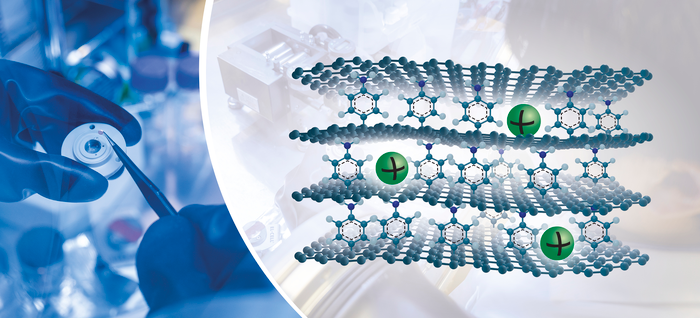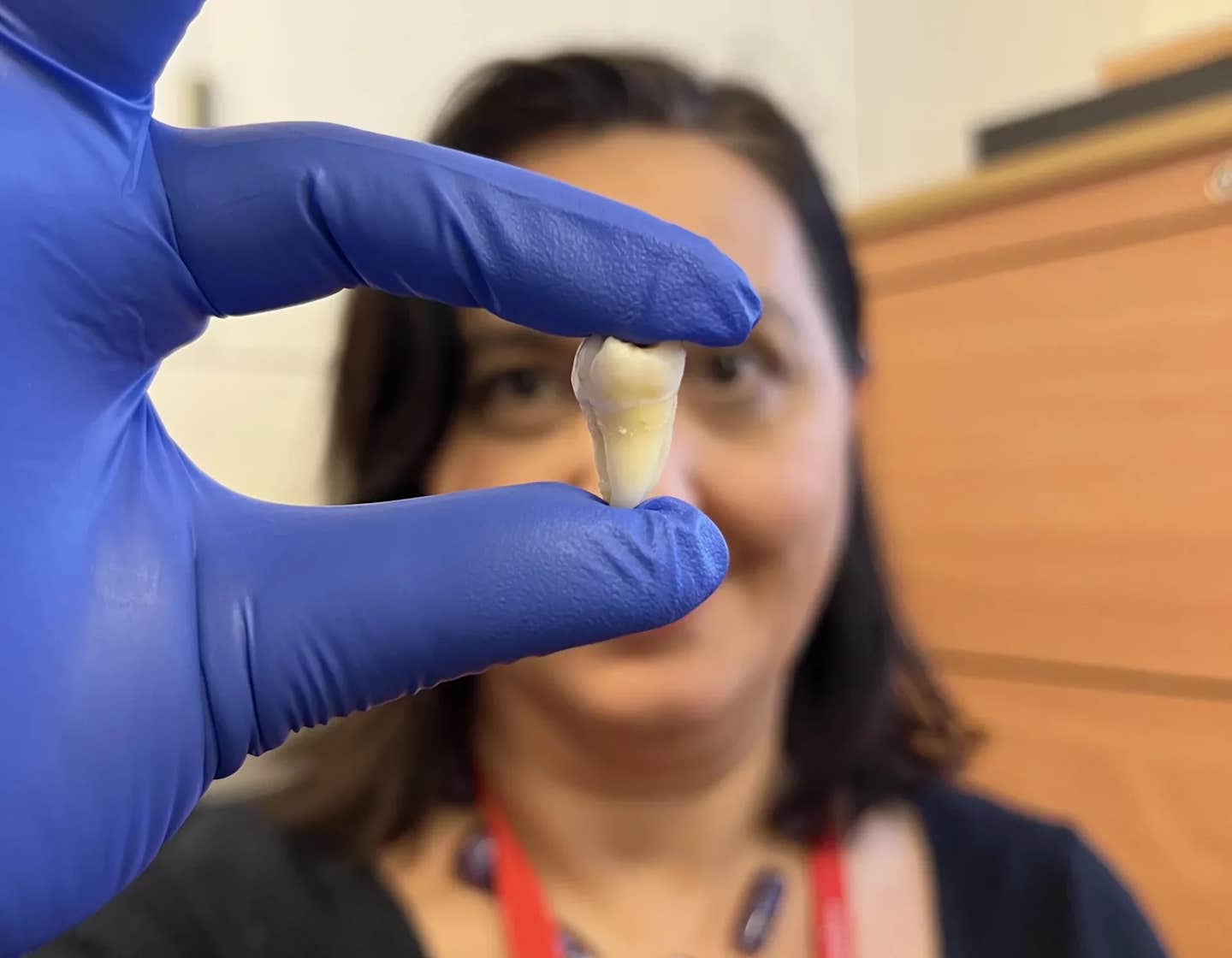Graphene innovation opens doors to low-cost, sustainable, sodium-ion batteries
Lithium ions work well for energy storage, however, lithium is an expensive metal with concerns regarding its environmental impact

[August 25, 2021: Chalmers University of Technology]
Sodium is one of the most abundant and affordable metals in the world. Now researchers at Chalmers University of Technology, Sweden, present a concept that allows sodium-ion batteries to match the capacity of today's lithium-ion batteries. Using a novel type of graphene, they stacked specially designed graphene sheets with molecules in between. The new material allows the sodium ions (in green) to efficiently store energy. (Credit: Image: Marcus Folino and Yen Strandqvist/Chalmers University of Technology)
Even though lithium ions work well for energy storage, lithium is an expensive metal with concerns regarding its long-term supply and environmental issues.
Sodium, on the other hand, is an abundant low-cost metal, and a main ingredient in seawater (and in kitchen salt). This makes sodium-ion batteries an interesting and sustainable alternative for reducing our need for critical raw materials. However, one major challenge is to increase the capacity.
At the current level of performance, sodium-ion batteries cannot compete with lithium-ion cells. One limiting factor is the graphite, which is composed of stacked layers of graphene, and used as the anode in today’s lithium-ion batteries.
The ions intercalate in the graphite, which means that they can move in and out of the graphene layers and be stored for energy usage. Sodium ions are larger than lithium ions and interact differently. Therefore, they cannot be efficiently stored in the graphite structure. But the Chalmers researchers have come up with a novel way to solve this.
“We have added a molecule spacer on one side of the graphene layer. When the layers are stacked together, the molecule creates larger space between graphene sheets and provides an interaction point, which leads to a significantly higher capacity,” says researcher Jinhua Sun at the Department of Industrial and Materials Science at Chalmers and first author of the scientific paper, published in Science Advances.
Ten times the energy capacity of standard graphite
Typically, the capacity of sodium intercalation in standard graphite is about 35 milliampere hours per gram (mA h g-1). This is less than one tenth of the capacity for lithium-ion intercalation in graphite. With the novel graphene the specific capacity for sodium ions is 332 milliampere hours per gram – approaching the value for lithium in graphite. The results also showed full reversibility and high cycling stability.
“It was really exciting when we observed the sodium-ion intercalation with such high capacity. The research is still at an early stage, but the results are very promising. This shows that it’s possible to design graphene layers in an ordered structure that suits sodium ions, making it comparable to graphite,” says Professor Aleksandar Matic at the Department of Physics at Chalmers.
“Divine” Janus graphene opens doors to sustainable batteries
The study was initiated by Vincenzo Palermo in his previous role as Vice-Director of the Graphene Flagship, a European Commission-funded project coordinated by Chalmers University of Technology.
The novel graphene has asymmetric chemical functionalisation on opposite faces and is therefore often called Janus graphene, after the two-faced ancient Roman God Janus – the God of new beginnings, associated with doors and gates, and the first steps of a journey. In this case the Janus graphene correlates well with the roman mythology, potentially opening doors to high-capacity sodium-ion batteries.
“Our Janus material is still far from industrial applications, but the new results show that we can engineer the ultrathin graphene sheets – and the tiny space in between them – for high-capacity energy storage. We are very happy to present a concept with cost-efficient, abundant and sustainable metals,” says Vincenzo Palermo, Affiliated Professor at the Department of Industrial and Materials Science at Chalmers.
More on the material: Janus graphene with a unique structure
The material used in the study has a unique artificial nanostructure. The upper face of each graphene sheet has a molecule that acts as both spacer and active interaction site for the sodium ions. Each molecule in between two stacked graphene sheets is connected by a covalent bond to the lower graphene sheet and interacts through electrostatic interactions with the upper graphene sheet. The graphene layers also have uniform pore size, controllable functionalisation density, and few edges.
Like these kind of feel good stories? Get the Brighter Side of News' newsletter.
Tags: #New_Innovations, #Graphene, #Lithium, #Sodium_Ion, #Batteries, #Green_Innovations, #The_Brighter_Side_of_News
Joshua Shavit
Science & Technology Writer | AI and Robotics Reporter
Joshua Shavit is a Los Angeles-based science and technology writer with a passion for exploring the breakthroughs shaping the future. As a contributor to The Brighter Side of News, he focuses on positive and transformative advancements in AI, technology, physics, engineering, robotics and space science. Joshua is currently working towards a Bachelor of Science in Business Administration at the University of California, Berkeley. He combines his academic background with a talent for storytelling, making complex scientific discoveries engaging and accessible. His work highlights the innovators behind the ideas, bringing readers closer to the people driving progress.



